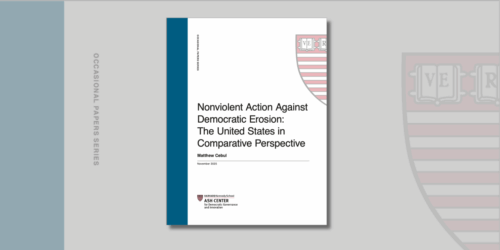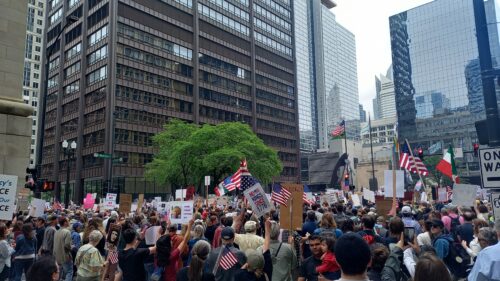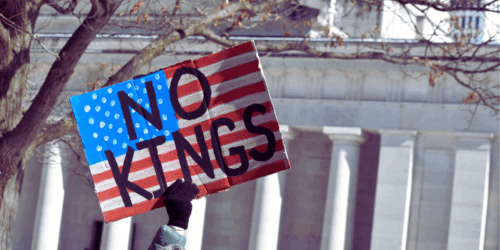Over the past week, the size of the crowds at rallies featuring the U.S president or candidates for that office has once again become a subject of intense scrutiny and debate. Lots of factors can affect crowd size — venue location, venue capacity, and weather, to name a few — and the relationship between the size of a candidate’s rally crowds and the probability that they’ll win the election is certainly not linear.
That said, it’s clear from the intensity of the discussion around the topic that it does carry some political weight, and the Crowd Counting Consortium (CCC) has been collecting data on the size of crowds at these events (among many others) for more than seven years. So, now seems like a good time to summarize and report again on what we’ve captured.
So far in 2024, CCC has logged 37 political rallies at which former president Donald Trump appeared, and we have information on crowd size for 28 of them. Across those 28 rallies and using our standard estimation rules (see below), the average crowd size has been about 5,600. That’s similar to averages of 4,600 in 2023 (19 events with information on crowd size) and 5,200 in 2022 (21 events) but still down from the average of nearly 15,000 across eight events in 2021, including the rally on the National Mall on January 6. It’s also similar to the average of about 5,000 we saw in the last presidential election year, 2020, when we logged a whopping 83 rallies featuring then-President Trump, but still down from averages of 8,100 across 10 events in 2017; 7,400 across 44 events in 2018; and 11,000 across 19 events with crowd-size info in 2019.
Before he dropped out of the race in late July, President Biden had appeared at seven rallies in 2024, according to our data, and we had information on crowd size for only four of them. Across those four, the average crowd size was about 1,300, and the largest reported crowd size we saw was “thousands.” Biden only appeared at two rallies in 2023, and we don’t have information on crowd size for either one. He featured in 13 rallies in 2022, and the average crowd size at the six on which we have information about that was about 2,400. In 2021, we saw an average size of about 1,600 across three events with crowd info. In 2020, at the start of the COVID pandemic, Biden only made a handful of appearances before crowds that we deliberately kept to very small numbers; we recorded seven rallies featuring Joe Biden that year, only have information about crowd size for three of them, and saw an average size of 65 across those three.
Since late July, when she became the presumptive and then official Democratic Party nominee for president, Vice President Harris has appeared at six campaign rallies. The reported crowd sizes at those rallies have ranged from about 10,000 to about 15,000, and we calculate an average size across the six of about 13,400.
Now, some notes on the methodology.
The Crowd Counting Consortium — a collaboration between the University of Connecticut and the Nonviolent Action Lab at Harvard Kennedy School’s Ash Center for Democratic Governance and Innovation — is a public-interest project that’s been making structured data on U.S. protest activity (including political rallies) since January 2017. The data are made freely available through our GitHub repository, and the data-making process, including the sources we use, is described in detail in our coding guidelines.
As that document describes, to estimate crowd size, we record any estimates we see in the sources we track, mostly commercial news outlets and social media; convert ambiguous numeric words or phrases to numbers using a conservative rule that assumes the lowest possible value (e.g., “hundreds” becomes 200, “tens of thousands” becomes 20,000); and then split the difference between the lowest and highest recorded estimate. So, for example, if a we saw reports that “thousands”, “tens of thousands”, and “about 30,000” attended a Trump or Biden rally, we would convert those words to 2,000 and 20,000, respectively, and then average the lowest and highest of all the resulting values — here, 2,000 and 30,000 — to arrive at a conservative point estimate of 16,000.
Finally, on this particular topic, it’s crucial to note that we do not regard Donald Trump as a credible reporter of the crowd sizes at his own rallies and therefore do not include his assertions about those numbers in our estimation process. Mr. Trump regularly and often grossly exaggerates the size of the crowds at events he headlines, so we restict our view in those cases to estimates from the news media, law enforcement, and other reporters and observers. By contrast, estimates of rally crowd size provided by the Harris campaign so far have lined up with observations made by news outlets and other eyewitnesses, so we do include those in our records when they are reported, as we did with President Biden.
The R script we used to filter relevant event records from the larger CCC data set and then generate these statistics can be found on the Nonviolent Action Lab’s GitHub repository, here.






